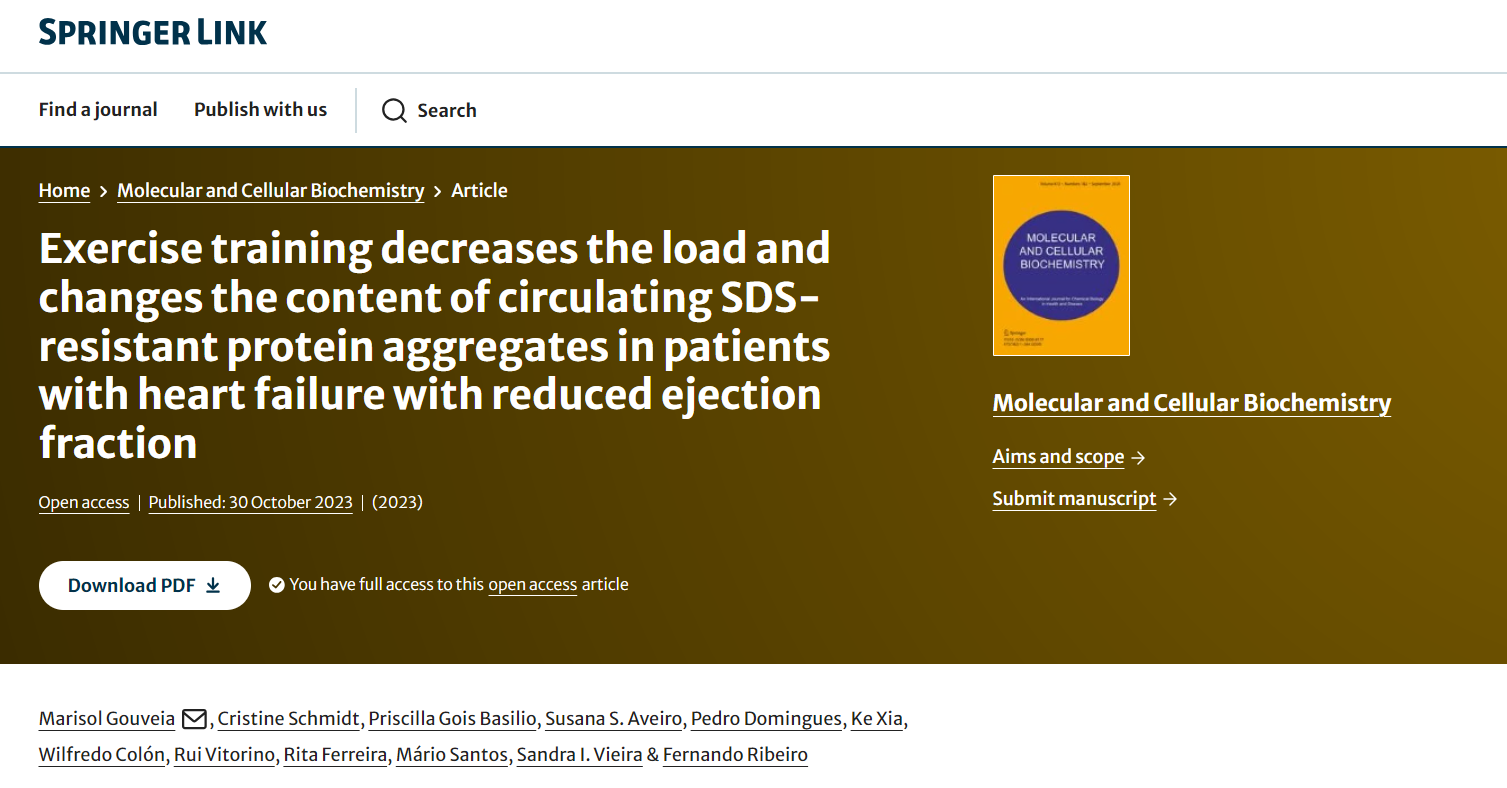

TITLE
Exercise training decreases the load and changes the content of circulating SDS-resistant protein aggregates in patients with heart failure with reduced ejection fraction
JOURNAL
Molecular and Cellular Biochemistry
AUTHORS
Marisol Gouveia, Cristine Schmidt, Priscilla Gois Basilio, Susana S. Aveiro, Pedro Domingues, Ke Xia, Wilfredo Colón, Rui Vitorino, Rita Ferreira, Mário Santos, Sandra I. Vieira & Fernando Ribeiro
ABSTRACT
Background Heart failure (HF) often disrupts the protein quality control (PQC) system leading to protein aggregate accumulation. Evidence from tissue biopsies showed that exercise restores PQC system in HF; however, little is known about its effects on plasma proteostasis.
Aim To determine the effects of exercise training on the load and composition of plasma SDS-resistant protein aggregates (SRA) in patients with HF with reduced ejection fraction (HFrEF).
Methods Eighteen patients with HFrEF (age: 63.4±6.5 years; LVEF: 33.4±11.6%) participated in a 12-week combined (aerobic plus resistance) exercise program (60 min/session, twice per week). The load and content of circulating SRA were assessed using D2D SDS-PAGE and mass spectrometry. Cardiorespiratory fitness, quality of life, and circulating levels of high-sensitive C-reactive protein, N-terminal pro-B-type natriuretic peptide (NT-proBNP), haptoglobin and ficolin-3, were also evaluated at baseline and after the exercise program.
Results The exercise program decreased the plasma SRA load (% SRA/total protein: 38.0±8.9 to 36.1±9.7%, p=0.018; % SRA/soluble fraction: 64.3±27.1 to 59.8±27.7%, p=0.003). Plasma SRA of HFrEF patients comprised 31 proteins, with α-2-macroglobulin and haptoglobin as the most abundant ones. The exercise training significantly increased haptoglobin plasma levels (1.03±0.40 to 1.11±0.46, p=0.031), while decreasing its abundance in SRA (1.83±0.54×1011 to 1.51±0.59×1011, p=0.049). Cardiorespiratory fitness [16.4(5.9) to 19.0(5.2) ml/kg/min, p=0.002], quality of life, and circulating NT-proBNP [720.0(850.0) to 587.0(847.3) pg/mL, p=0.048] levels, also improved after the exercise program.
Conclusion Exercise training reduced the plasma SRA load and enhanced PQC, potentially via haptoglobin-mediated action, while improving cardiorespiratory fitness and quality of life of patients with HFrEF



